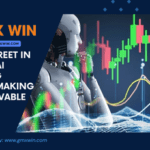Understanding the Goldilocks Economy
Definition and Characteristics
A Goldilocks economy is “just right”—neither too hot nor too cold. It is an economic state where growth is strong enough to reduce unemployment but not so robust as to trigger inflation. Key characteristics include:
- Moderate Economic Growth: Steady GDP growth without significant volatility.
- Low Inflation: Stable prices that do not erode purchasing power.
- Low Unemployment: High employment rates with job creation across sectors.
- Stable Interest Rates: Central banks maintain interest rates at levels that support growth without overheating the economy.
Historical Context
The term gained popularity in the 1990s when the US experienced a period of sustained economic growth, low inflation, and low unemployment. The Federal Reserve’s monetary policies and technological advancements contributed to this favorable environment, which lasted until the early 2000s.
Current Economic Indicators
GDP Growth
The US economy has shown signs of robust GDP growth in recent quarters. The Bureau of Economic Analysis (BEA) reported a growth rate of 6.4% in the first quarter of 2024, driven by consumer spending, business investment, and government spending. Forecasts for the third quarter remain optimistic, with economists predicting continued expansion.
Inflation Trends
Inflation, a key concern for policymakers and investors, has been relatively contained. The Consumer Price Index (CPI) rose by 2.1% year-over-year in June 2024, within the Federal Reserve’s target range. Factors contributing to this stable inflation include supply chain improvements, moderated commodity prices, and effective monetary policy.
Employment Rates
The labor market has shown remarkable resilience, with unemployment rates dropping to 3.6% in June 2024. Job creation has been robust across sectors, particularly in technology, healthcare, and professional services. Labor force participation has also increased, indicating a healthy labor market.
Consumer Confidence
Consumer confidence is a critical indicator of economic health. The Conference Board’s Consumer Confidence Index reached 128.9 in June 2024, reflecting optimism about job prospects, income growth, and overall economic conditions.
Business Investment
Business investment has been a significant driver of economic growth. Capital expenditures on equipment, technology, and infrastructure have increased as companies anticipate continued economic expansion. The BEA reported a 10% increase in non-residential fixed investment in the first quarter of 2024.
Factors Contributing to the Goldilocks Economy
Federal Reserve Policies
The Federal Reserve’s monetary policies have played a crucial role in fostering a Goldilocks economy. By maintaining interest rates at moderate levels and implementing quantitative easing measures, the Fed has supported economic growth while keeping inflation in check.
Fiscal Stimulus
Government fiscal stimulus, including infrastructure spending and tax incentives, has bolstered economic activity. The Infrastructure Investment and Jobs Act of 2021 continues to drive investments in transportation, energy, and digital infrastructure, creating jobs and stimulating demand.
Technological Advancements
Technological innovation has enhanced productivity and efficiency across industries. Advances in artificial intelligence, automation, and digitalization have enabled businesses to optimize operations, reduce costs, and drive economic growth.
Global Trade Dynamics
Global trade dynamics have also contributed to the favorable economic conditions. Trade agreements and improved supply chain logistics have facilitated international commerce, benefiting export-oriented industries and supporting economic expansion.
Labor Market Dynamics
The labor market has adapted to changing economic conditions, with increased flexibility and resilience. Workforce training programs, remote work adoption, and gig economy opportunities have expanded employment prospects and supported labor market stability.
Sectoral Implications
Technology Sector
The technology sector continues to be a significant driver of economic growth. Investments in cloud computing, cybersecurity, and digital transformation are expected to remain strong, fueling innovation and productivity gains.
Healthcare Sector
The healthcare sector is poised for growth, driven by demographic trends, technological advancements, and increased healthcare spending. Investments in telemedicine, biotech, and healthcare infrastructure will support sector expansion.
Consumer Goods and Retail
The consumer goods and retail sector is benefiting from strong consumer confidence and spending. E-commerce growth, digital marketing, and personalized shopping experiences are key trends shaping the sector.
Financial Services
The financial services sector is experiencing stability, with moderate interest rates and robust economic growth supporting lending and investment activities. Fintech innovations and regulatory reforms are enhancing sector efficiency and competitiveness.
Energy and Utilities
The energy and utilities sector is undergoing a transformation, driven by investments in renewable energy, grid modernization, and sustainability initiatives. The transition to a low-carbon economy presents opportunities for growth and innovation.
Risks and Challenges
Inflationary Pressures
While inflation remains contained, potential risks include supply chain disruptions, rising commodity prices, and labor market tightness. Policymakers must remain vigilant to prevent overheating.
Geopolitical Tensions
Geopolitical tensions, including trade disputes and conflicts, pose risks to global economic stability. Uncertainties in international relations can impact trade flows, investment decisions, and market confidence.
Policy Uncertainty
Policy uncertainty, particularly regarding fiscal policies and regulatory changes, can affect business confidence and investment. Clear and consistent policy frameworks are essential for sustained economic growth.
Technological Disruptions
Rapid technological advancements can disrupt industries and labor markets. While innovation drives growth, it also requires adaptation and reskilling to mitigate potential job displacement.
Climate Change
Climate change poses long-term risks to economic stability. Extreme weather events, resource scarcity, and environmental regulations can impact various sectors and necessitate sustainable practices.
Strategies for Businesses and Investors
Diversification
Diversifying investments across sectors and geographies can mitigate risks and enhance returns. Businesses can explore new markets and product lines to capture growth opportunities.
Innovation and Adaptation
Investing in innovation and adapting to changing market conditions are crucial for long-term success. Embracing digital transformation, sustainability, and workforce development can drive competitiveness.
Risk Management
Implementing robust risk management strategies can protect against economic volatility and uncertainties. Scenario planning, stress testing, and contingency measures are essential for resilience.
Strategic Partnerships
Forming strategic partnerships and collaborations can enhance capabilities and access to new markets. Businesses can leverage synergies and shared resources to drive growth.
Sustainable Practices
Adopting sustainable practices and integrating environmental, social, and governance (ESG) considerations can enhance long-term value. Sustainability initiatives can attract investment, reduce risks, and foster innovation.
Conclusion
The US economy is showing signs of a Goldilocks scenario as it enters the third quarter, characterized by moderate growth, low inflation, and low unemployment. This favorable environment is driven by effective monetary and fiscal policies, technological advancements, and resilient labor market dynamics. While potential risks and challenges remain, businesses and investors can capitalize on the opportunities presented by this economic state. By embracing innovation, diversification, risk management, and sustainable practices, stakeholders can navigate the evolving economic landscape and contribute to sustained economic prosperity.



